-
 Bitcoin
Bitcoin $118400
0.39% -
 Ethereum
Ethereum $3814
2.17% -
 XRP
XRP $3.547
1.34% -
 Tether USDt
Tether USDt $1.000
0.00% -
 BNB
BNB $769.5
2.95% -
 Solana
Solana $191.7
6.36% -
 USDC
USDC $0.9999
0.01% -
 Dogecoin
Dogecoin $0.2722
7.75% -
 Cardano
Cardano $0.8995
5.59% -
 TRON
TRON $0.3158
-0.78% -
 Hyperliquid
Hyperliquid $47.37
4.46% -
 Stellar
Stellar $0.4848
3.54% -
 Sui
Sui $4.031
1.72% -
 Chainlink
Chainlink $20.11
3.94% -
 Hedera
Hedera $0.2832
3.16% -
 Avalanche
Avalanche $26.20
4.27% -
 Bitcoin Cash
Bitcoin Cash $530.5
0.67% -
 Shiba Inu
Shiba Inu $0.00001568
3.59% -
 Litecoin
Litecoin $118.4
1.42% -
 UNUS SED LEO
UNUS SED LEO $8.976
-0.23% -
 Toncoin
Toncoin $3.349
2.54% -
 Polkadot
Polkadot $4.590
2.54% -
 Uniswap
Uniswap $10.56
-0.59% -
 Ethena USDe
Ethena USDe $1.001
0.00% -
 Monero
Monero $327.7
0.39% -
 Pepe
Pepe $0.00001422
2.62% -
 Bitget Token
Bitget Token $4.973
-1.22% -
 Dai
Dai $1.000
0.02% -
 Aave
Aave $331.9
1.59% -
 Bittensor
Bittensor $429.6
-0.56%
What is NFTfi (NFT finance)?
NFTfi enables users to borrow crypto by collateralizing their NFTs, offering liquidity without the need to sell valuable digital assets.
Jul 20, 2025 at 07:42 pm
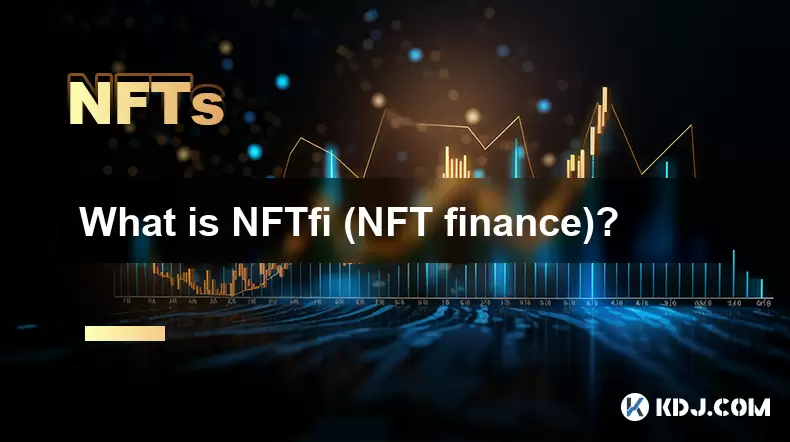
Understanding the Concept of NFTfi
NFTfi, short for Non-Fungible Token Finance, refers to a decentralized financial ecosystem that integrates non-fungible tokens (NFTs) with lending, borrowing, and other financial services. Unlike traditional finance or even DeFi (Decentralized Finance) focused on fungible tokens like ETH or stablecoins, NFTfi revolves around the use of unique digital assets—NFTs—as collateral in peer-to-peer financial transactions.
The concept allows NFT holders to unlock liquidity without selling their collectibles, artwork, or digital real estate. By using platforms that support NFT-backed loans, users can deposit their NFTs as collateral and receive cryptocurrency in return. This process introduces a new layer of utility to NFTs beyond mere ownership or display.
How NFTfi Platforms Operate
Most NFTfi platforms function through smart contracts deployed on blockchain networks like Ethereum. These smart contracts facilitate trustless interactions between lenders and borrowers. Here’s how it typically works:
- A borrower lists their NFT as collateral.
- A lender offers a loan in crypto in exchange for holding the NFT until repayment.
- If the borrower repays within the agreed period, they regain their NFT.
- If they default, the lender gains ownership of the NFT.
This system enables both parties to engage in secure, permissionless financial activities. Some platforms also allow for interest-bearing loans, where borrowers pay interest over time instead of handing over the NFT immediately upon default.
Key Components of NFTfi Ecosystems
To fully grasp what NFTfi entails, it's essential to understand its core components:
- Collateralization Mechanism: The process by which an NFT is locked into a smart contract as security for a loan. This ensures lenders have recourse if borrowers fail to repay.
- Loan Agreements: These are defined via smart contracts and include terms such as loan amount, duration, interest rate, and liquidation conditions. Borrowers must agree to these before proceeding.
- Liquidity Pools: Some platforms aggregate funds from multiple lenders into pools that borrowers can draw from. These pools often operate under automated market-making models.
- Oracles and Valuation Tools: Accurate valuation of NFTs remains a challenge. Oracles and AI-based tools help estimate fair prices based on recent sales, rarity scores, and floor prices on marketplaces.
Each of these elements plays a crucial role in ensuring the stability and usability of NFTfi protocols.
Popular NFTfi Platforms and Their Features
Several platforms have emerged as leaders in the NFTfi space:
- NFTfi.com: One of the earliest platforms allowing peer-to-peer NFT-backed loans. It supports blue-chip NFT collections like Bored Ape Yacht Club and CryptoPunks.
- Arcade: Offers customizable loan terms and integrates with major NFT marketplaces. It also supports "renting" NFTs against future payments.
- JPEG'd: A newer entrant that uses a single asset, PEG tokens, to offer flash loans backed by NFTs. It focuses on speed and capital efficiency.
- BendDAO: Allows users to borrow ETH instantly by locking NFTs. It features a Dutch auction-style liquidation mechanism to handle defaults efficiently.
These platforms vary in design but share the common goal of enabling liquidity extraction from NFT holdings.
Risks and Challenges in NFTfi
Despite its innovative appeal, NFTfi comes with several risks:
- Price Volatility: While NFTs are non-fungible, their value can fluctuate dramatically. Sudden drops may lead to under-collateralized loans.
- Smart Contract Vulnerabilities: As with any DeFi application, bugs or exploits in the code can result in loss of funds.
- Liquidation Risks: If a borrower fails to meet repayment deadlines, they risk losing high-value NFTs permanently.
- Market Illiquidity: Many NFTs are illiquid assets. In case of default, lenders may struggle to sell them quickly at fair value.
Users should thoroughly research each platform and understand the specific mechanisms involved before participating in NFTfi markets.
Getting Started with NFTfi: A Step-by-Step Guide
If you're interested in exploring NFTfi, here’s how to begin:
- Ensure you own NFTs supported by popular NFTfi platforms.
- Connect your wallet (like MetaMask or Rainbow) to the chosen platform.
- Navigate to the lending or borrowing section based on your intent.
- For borrowers, select your NFT, set loan terms, and confirm the transaction.
- For lenders, browse available NFTs, decide on loan terms, and fund the offer.
- Monitor your positions regularly to avoid unexpected liquidations.
Each step requires careful attention to gas fees, contract approvals, and loan parameters to ensure smooth execution.
Frequently Asked Questions
What types of NFTs are commonly used in NFTfi?
Most platforms prioritize blue-chip NFTs such as BAYC, Azuki, and CryptoPunks due to their established market value and liquidity. However, some platforms are beginning to accept more niche or emerging collections.
Can I cancel a loan once initiated on an NFTfi platform?
No, once a loan is accepted and the NFT is locked into the smart contract, cancellation isn't possible. Repayment or default are the only outcomes.
Is there insurance available for NFTfi loans?
Currently, most NFTfi platforms do not offer insurance. Users bear full responsibility for potential losses due to smart contract failures or market volatility.
Do I need a special wallet to interact with NFTfi platforms?
You can use standard Ethereum-compatible wallets like MetaMask, Coinbase Wallet, or Rainbow. Ensure the wallet supports NFTs and has sufficient ETH for gas fees.
Disclaimer:info@kdj.com
The information provided is not trading advice. kdj.com does not assume any responsibility for any investments made based on the information provided in this article. Cryptocurrencies are highly volatile and it is highly recommended that you invest with caution after thorough research!
If you believe that the content used on this website infringes your copyright, please contact us immediately (info@kdj.com) and we will delete it promptly.
- Saylor, Trump, and Bitcoin: A New York Minute on Crypto's Power Trio
- 2025-07-22 00:50:12
- Strategy, Bitcoin, and $122,000: A New York Minute on Crypto's Latest Moves
- 2025-07-22 00:50:12
- Dogecoin Price Prediction: Will the Pump Continue?
- 2025-07-22 01:50:12
- AVAX Price, Mining Rewards, and PI Price: What's the Buzz?
- 2025-07-22 01:50:12
- AAVE, ONDO, XRP: Charting the Course for Altcoin Breakouts
- 2025-07-22 01:10:12
- Dogwifhat (WIF) Price Outlook: Will the Meme Coin Momentum Continue?
- 2025-07-22 01:15:12
Related knowledge
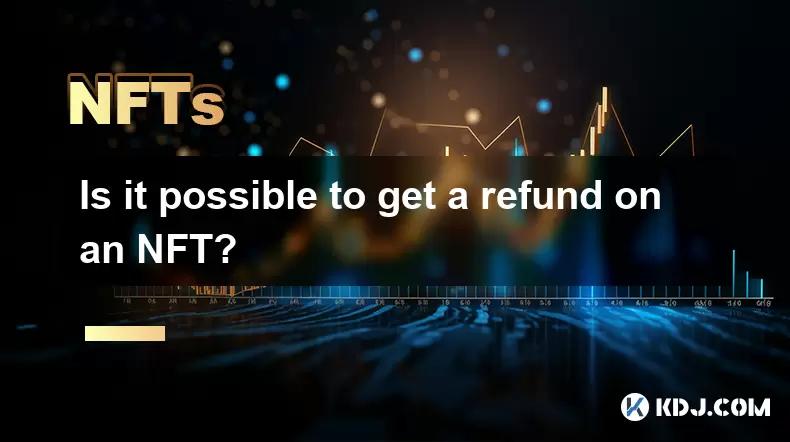
Is it possible to get a refund on an NFT?
Jul 21,2025 at 08:35pm
Understanding NFT Transactions and RefundsWhen you purchase an NFT (Non-Fungible Token), the transaction is typically recorded on a blockchain, making...
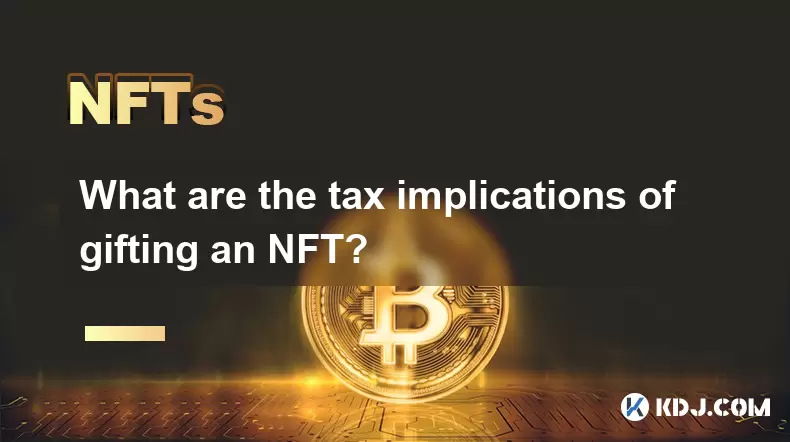
What are the tax implications of gifting an NFT?
Jul 19,2025 at 04:21am
Understanding the Basics of NFT GiftingGifting a Non-Fungible Token (NFT) involves transferring ownership from one individual to another without recei...
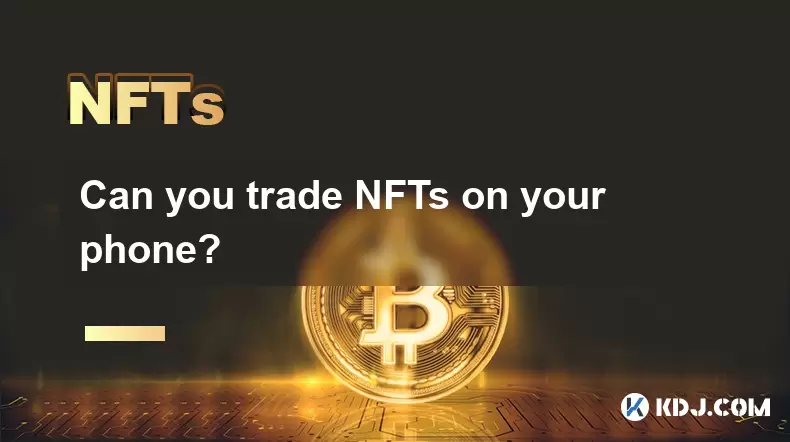
Can you trade NFTs on your phone?
Jul 18,2025 at 04:29am
Trading NFTs on Mobile DevicesYes, you can trade NFTs on your phone, and the process has become increasingly streamlined thanks to a variety of mobile...
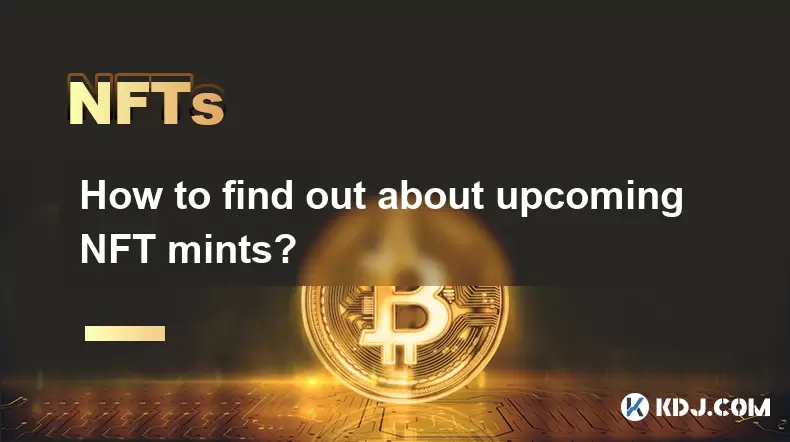
How to find out about upcoming NFT mints?
Jul 18,2025 at 11:50am
Exploring NFT Minting OpportunitiesUnderstanding the landscape of upcoming NFT mints is crucial for collectors, investors, and creators who wish to st...
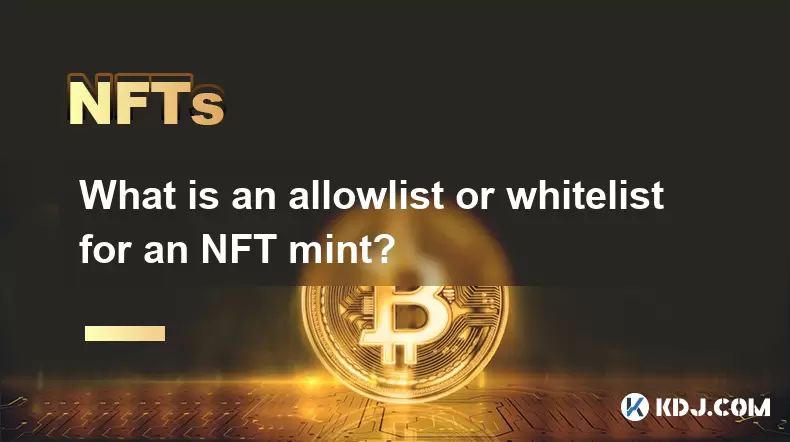
What is an allowlist or whitelist for an NFT mint?
Jul 20,2025 at 07:14pm
Understanding the Concept of an Allowlist for NFT MintingAn allowlist, also commonly referred to as a whitelist, is a mechanism used in the NFT mintin...
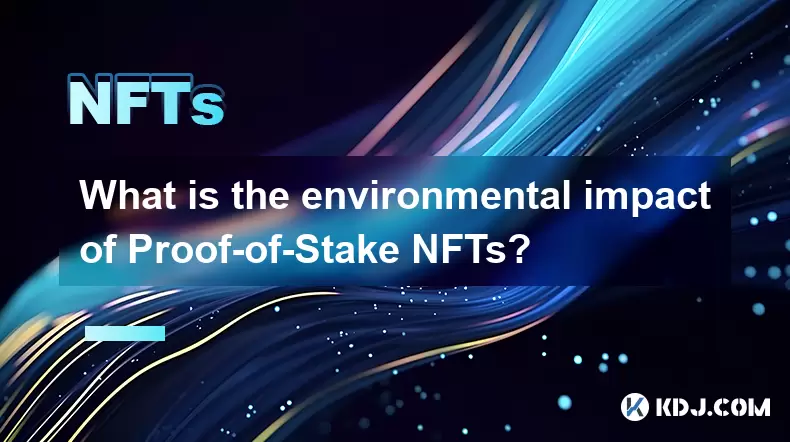
What is the environmental impact of Proof-of-Stake NFTs?
Jul 17,2025 at 07:14pm
Understanding the Basics of Proof-of-Stake NFTsProof-of-Stake (PoS) is a consensus mechanism used by blockchain networks to validate transactions and ...

Is it possible to get a refund on an NFT?
Jul 21,2025 at 08:35pm
Understanding NFT Transactions and RefundsWhen you purchase an NFT (Non-Fungible Token), the transaction is typically recorded on a blockchain, making...

What are the tax implications of gifting an NFT?
Jul 19,2025 at 04:21am
Understanding the Basics of NFT GiftingGifting a Non-Fungible Token (NFT) involves transferring ownership from one individual to another without recei...

Can you trade NFTs on your phone?
Jul 18,2025 at 04:29am
Trading NFTs on Mobile DevicesYes, you can trade NFTs on your phone, and the process has become increasingly streamlined thanks to a variety of mobile...

How to find out about upcoming NFT mints?
Jul 18,2025 at 11:50am
Exploring NFT Minting OpportunitiesUnderstanding the landscape of upcoming NFT mints is crucial for collectors, investors, and creators who wish to st...

What is an allowlist or whitelist for an NFT mint?
Jul 20,2025 at 07:14pm
Understanding the Concept of an Allowlist for NFT MintingAn allowlist, also commonly referred to as a whitelist, is a mechanism used in the NFT mintin...

What is the environmental impact of Proof-of-Stake NFTs?
Jul 17,2025 at 07:14pm
Understanding the Basics of Proof-of-Stake NFTsProof-of-Stake (PoS) is a consensus mechanism used by blockchain networks to validate transactions and ...
See all articles

























































































